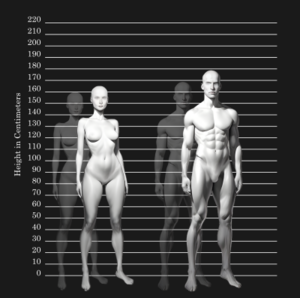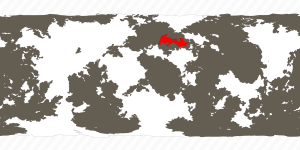Emther: Difference between revisions
m (Add wiki-links) |
m (Recategorize) |
||
| Line 12: | Line 12: | ||
| Languages = | | Languages = | ||
| Religions =[[Orkanan]] | | Religions =[[Orkanan]] | ||
| Related ethnic groups = | | Related ethnic groups = | ||
}} | }} | ||
The '''Emther''' are an ethnic group native to the island of Thultannia in northern [[Anaria]], known for their distinct red or fair hair and blue or green eyes. They are the predominant ethnic group in Penryn and [[Halland]], with minority populations in [[Stoldavia]], [[Auresia]], northern Anaria Major, western Jörveh, and various Thultannian colonies around [[Gotha]]. | The '''Emther''' are an [[Ethnic groups|ethnic group]] native to the island of [[Thultannia]] in northern [[Anaria]], known for their distinct red or fair hair and blue or green eyes. They are the predominant ethnic group in Penryn and [[Halland]], with minority populations in [[Stoldavia]], [[Auresia]], northern Anaria Major, western [[Jörveh]], and various Thultannian colonies around [[Gotha]]. | ||
== Origins == | == Origins == | ||
| Line 31: | Line 31: | ||
The Emther speak a variety of languages, reflecting their diverse history and the different regions they inhabit: | The Emther speak a variety of languages, reflecting their diverse history and the different regions they inhabit: | ||
* | * Cydhlig languages: including Awenydd, Kreizenn, Ceolán (Irish), and Arrane (Manx). | ||
* | * Achlt languages: such as Hallisian languages and Sûnens | ||
* | * Dragar languages: including [[Anisoran language|Anisoran]] and Auresian. | ||
== Ethnic Relations == | == Ethnic Relations == | ||
In modern times, the Emther have experienced mixed relations with other ethnic groups. They generally maintain a cautious stance toward the Dölmer, perceived as domineering. A similar wariness exists towards the [[Karsk]], due to historical territorial conflicts involving [[Auresia]] and Ardennes in southern Thultannia. Conversely, the Emther have a more positive relationship with the [[Aldsay]] of [[Aedeland]] and Jörveh, viewing them as friendly and compassionate, akin to a less imposing version of the Dölmer. | In modern times, the Emther have experienced mixed relations with other ethnic groups. They generally maintain a cautious stance toward the Dölmer, perceived as domineering. A similar wariness exists towards the [[Karsk]], due to historical territorial conflicts involving [[Auresia]] and Ardennes in southern Thultannia. Conversely, the Emther have a more positive relationship with the [[Aldsay]] of [[Aedeland]] and Jörveh, viewing them as friendly and compassionate, akin to a less imposing version of the Dölmer. | ||
[[category:ethnic groups]][[category:anthropology]] | [[category:ethnic groups]][[category:anthropology]][[Category:Ethnic groups in Anaria]] | ||
[[Category:Anaria]] | |||
Latest revision as of 20:50, 8 September 2024
| Ethnic group | |||
|---|---|---|---|
 ' | |||
| Height comparison | |||

| |||
| Eye colour |
| ||
| Hair colour and type |
| ||
| Total population | |||
| Location map | |||

| |||
| Regions with significant populations | |||
| Missingflag.png?nolink&40 test Missingflag.png?nolink&40 test | |||
| Languages | |||
| Religions | Orkanan | ||
| Related ethnic groups | |||
The Emther are an ethnic group native to the island of Thultannia in northern Anaria, known for their distinct red or fair hair and blue or green eyes. They are the predominant ethnic group in Penryn and Halland, with minority populations in Stoldavia, Auresia, northern Anaria Major, western Jörveh, and various Thultannian colonies around Gotha.
Origins
The Emther primarily descend from the Cydhlig people, who originally inhabited all of Thultannia. It is believed that they first migrated from Jörveh and Stoldavia around 26,000 BP, settling in the areas now known as Halland and Einhafan. Subsequent migrations occurred between 23,000 BP and 7,000 BP (500 RH), bringing immigrants from Anaria Major and Anaria Minor. By 5,000 BP (2500 RH), the red-haired, green- or brown-eyed Cydhlig people had become the dominant ethnic group across the island. The languages spoken by these people belonged to the Cydhlig language family,
History
By 5500 RH, the Cydhlig people had undergone significant changes due to migrations from the south and the influence of Orkanan missionaries from Stoldavia. This led to the emergence of a distinct ethnic group known as the Emther. This era, often referred to as the Migration Period, marked a time of ethnic consolidation. By 6000 RH, southern Thultannia's South Cydhlig languages had been replaced by other languages. However, in the north and among various clans, the Emther maintained their linguistic and cultural traditions.
By 6200 RH, Thultannia was divided into distinct kingdoms and territories, including the notable republic of Eihhafan and Iseldir, which dominated the northern and central regions by 7200 RH.
Religion
The predominant religion among the Emther is Orkanan, with various branches being practiced across the regions where they reside.
Languages
The Emther speak a variety of languages, reflecting their diverse history and the different regions they inhabit:
- Cydhlig languages: including Awenydd, Kreizenn, Ceolán (Irish), and Arrane (Manx).
- Achlt languages: such as Hallisian languages and Sûnens
- Dragar languages: including Anisoran and Auresian.
Ethnic Relations
In modern times, the Emther have experienced mixed relations with other ethnic groups. They generally maintain a cautious stance toward the Dölmer, perceived as domineering. A similar wariness exists towards the Karsk, due to historical territorial conflicts involving Auresia and Ardennes in southern Thultannia. Conversely, the Emther have a more positive relationship with the Aldsay of Aedeland and Jörveh, viewing them as friendly and compassionate, akin to a less imposing version of the Dölmer.